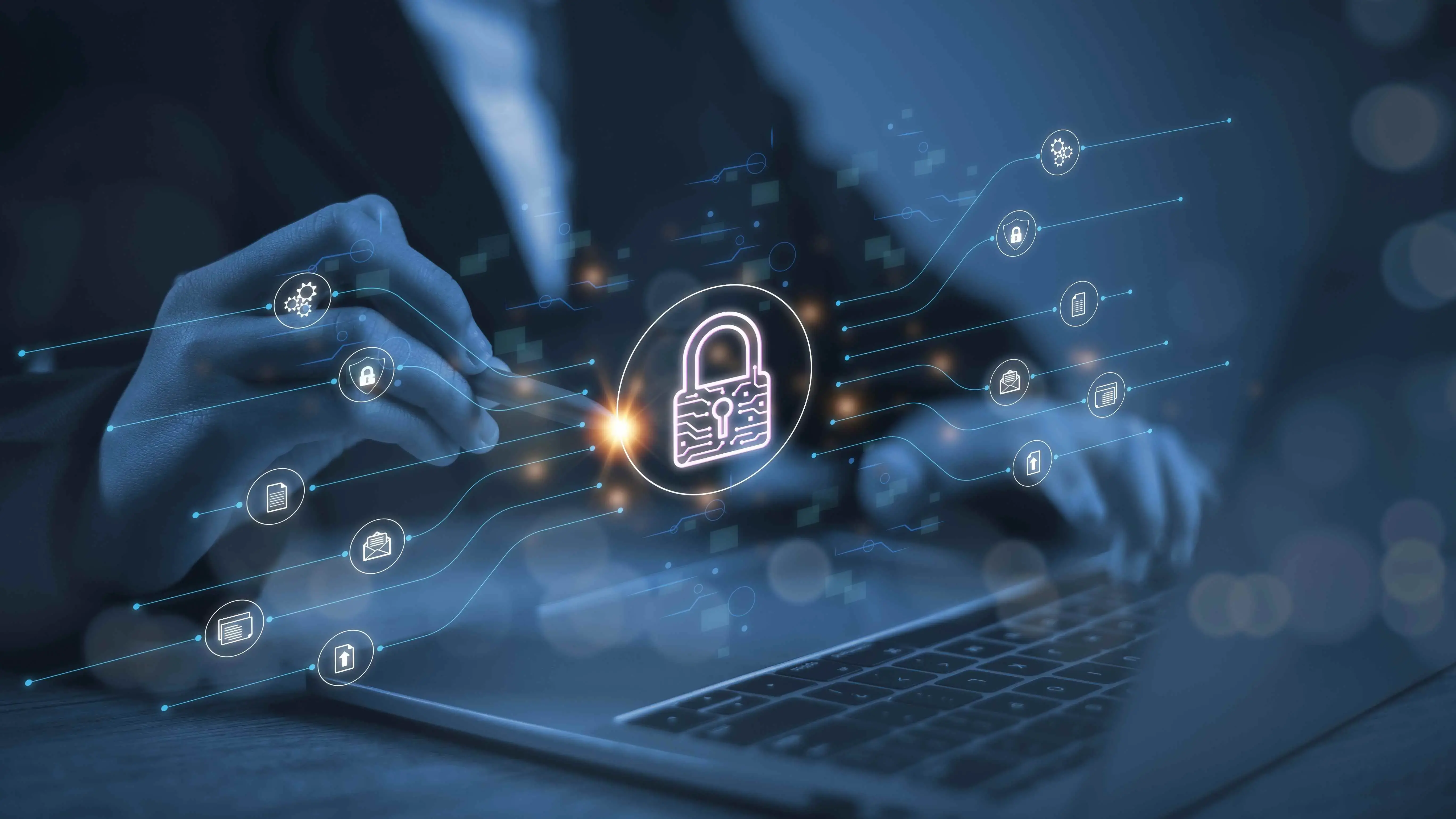Many platforms offer features that have been compacted, removing technicalities or streamlining the use of software and services, for instance, software-as-a-service, where software is hosted online and made available to users via a subscription.
The As-a-Service Model is also applied in cybersecurity, called cybersecurity as a service. Securing applications requires different approaches, and many companies are outsourcing their security needs to cybersecurity as-a-service providers to manage and strengthen their security and overall cybersecurity posture.
What does cybersecurity-as-a-service entail?
What is Cybersecurity as a Service
Cybersecurity-as-a-service(CSaaS) is a security model whereby an organization outsources its cybersecurity management to a third-party provider on a Pay-as-you-go or subscription-based service.
The Cybersecurity-as-a-service provider delivers various cybersecurity services, tools, and skills to help protect the organization and its assets, including intellectual property, data, etc, from vulnerabilities, threats, and cyber-attacks.
How is Cybersecurity-as-a-service different from cybersecurity?
Cybersecurity refers to the practice, process, technologies, and tools used to protect systems, networks, and applications from cyber threats or attacks, protecting digital assets. Cybersecurity processes are usually performed in-house.
Cybersecurity-as-a-service (CSaaS) is a model where cybersecurity solutions are provided by a third-party vendor. This removes the need to build and manage cybersecurity in-house.
Compared to the traditional cybersecurity method, businesses can find it challenging to manage the entire cybersecurity of an organization, especially as businesses are growing with digital transformations like IOT.
With the rise of advanced technologies, the attack surface is becoming sophisticated; therefore, securing applications remains crucial.
Organizations require professionals who can enforce security strategies that fit their needs, which may be resource-intensive, especially if the organization has a large staff and systems located across multiple locations.
Outsourcing cybersecurity allows organizations to delegate all or specific security needs to an external vendor. In some cases, businesses outsource certain aspects, like threat monitoring, while maintaining internal teams to manage other aspects of cybersecurity.
Key Point
Offering cybersecurity services without developing infrastructure or personnel expertise by performing various tasks, including;
- Real-time threat detection and monitoring
- Data protection and incident response
- Dark web monitoring
- Vulnerability management
Examples of cybersecurity-as-a-service providers, and some of their offerings include;
Palo Alto Networks: Offers advanced threat intelligence, managed security services, and firewalls.
Fortinet: Offers CSaaS services including cloud security, endpoint protection, and firewalls.
Sophos: Offers managed detection/response, firewall, and endpoint protection services.
Heimdal: Offers endpoint detection and response, patch management, and threat prevention services.
McAfee: Provides cloud-based threat detection and endpoint protection services.
Okta: Focuses on Identity and Access Management
Proofpoint: Offers email security and user protection services
There are several components necessary to ensure organizations are protected from vulnerabilities, including;
Application Security: Application security involves measures designed to prevent data from being tampered with or stolen. This could be preventing systems from cross-site scripting or SQL injection.
Endpoint Security: Endpoint security involves protecting devices (“endpoints”) such as laptops, desktops, mobile phones, servers, and IoT devices connected to a network. This also includes securing remote workers' connected devices.
Data Security: Data Security protects digital information from corruption, theft, or unauthorised access.
It includes protecting hardware and storage devices, administrative and access controls, and the security of software applications, organization policies, and procedures.
Cloud Security: Cloud Security secures cloud computing systems by ensuring that data is kept private and safe across infrastructure, applications, and platforms online.
Network Security: Network security involves using advanced firewalls and an intrusion detection system (IDS) to monitor, identify, and respond to threats. These security measures help prevent unauthorised access by employing techniques such as encryption, access control, and network segmentation to detect and contain intrusions.
The importance of Managed Detection and Response in CSaaS.
Managed Detection and Response (MDR): Managed detection and response is an approach that combines technology and human expertise to monitor network, endpoints, and cloud environments uninterruptedly. Employing technology and expertise ensures proactive threat hunting, supervised response, and remediation.
How Cybersecurity-as-a-Service Works
Cybersecurity-as-a-service is a structured approach to protecting systems and applications from cyber threats. Typically, it involves multiple phases, including assessing an organization's security posture and identifying vulnerabilities.
CSaaS solutions are integrated into new or existing IT infrastructure to enable real-time monitoring, automate threat detection, and respond instantly to incidents to prevent damage or resolve issues before they escalate.
The process of cybersecurity as a service includes:
Setup and Integration
This is the first step, which includes risk assessment to understand the organization's security posture, such as;
- Identifying Vulnerabilities
- Identifying potential threats
- Executing security measures
Continuous Monitoring and Detection
Network activities are monitored in real time to detect and respond to threats before an attack occurs or escalates. CSaaS uses advanced tools and technologies, including automated threat detection systems, machine learning, and AI, to identify vulnerabilities and potential threats.
These services collect and analyse logs from network devices and applications to identify suspicious or unusual activity that may indicate a security breach.
Threat Detection
Security protocols like firewalls and encryption proactively secure data and network traffic. They are capable of detecting or blocking potential threats/ unauthorised access. In collaboration with proactive tools, Intrusion Detection Systems are a more advanced security protocol that provides advanced capabilities of monitoring and alerting personnel to suspicious activities or unusual behaviour.
Incident Response and Mitigation
The speed and effectiveness of responding to security incidents are critical. Cybersecurity-as-a-Service providers ensure rapid response to threats to contain or mitigate their impact.
The incident response and mitigation process typically involve investigating the threat, documenting, and resolving issues efficiently by cybersecurity professionals.
Post-Incident Analysis and Reporting
After a security incident, an analysis is conducted to understand the root cause and impact. This process helps the security team strengthen security defences by applying the appropriate tools and strategies to prevent similar occurrences in the future.
Furthermore, detailed documentation and reporting are necessary to ensure compliance with the industry standard and regulatory requirements to show that the organization takes security seriously, transparency, and audits, helping security teams identify patterns and improve systems over time, amongst other reasons.
Continuous Improvement and Updating
Security systems must be regularly updated to apply patches to fix vulnerabilities and close security gaps. Cybersecurity teams stay informed about the latest security developments to ensure that CSaaS tools adapt their security posture to address emerging threats. This includes employing strategies to maintain and continuously strengthen the system defences.
Benefits of Cyber-security-as-a-Service (CSaaS)

There are several benefits of CSaaS, including;
Reduced Cost
CSaaS reduced the cost of building and maintaining in-house cybersecurity systems and teams. This means organizations can save on salaries, training costs, and other expenses attached to purchasing tools, including software, and maintaining the security infrastructure.
Precautionary Planning
CSaaS advanced analytics and threat intelligence detect potential threats before they occur. By planning strategically with a focus on prevention, organizations can reduce the risk posed by vulnerabilities and emerging cybersecurity threats. This approach enables systems to anticipate, respond and mitigate incidents effectively.
Central Security Management
CSaaS offers a central platform that delivers security functions such as monitoring, threat management, and incident response.
This centralized approach enhances efficiency by enabling faster response, improving visibility across systems, and promoting collaboration among security teams. Real-time insights and shared access to security data support transparency and help security teams make informed decisions.
Scalability
CSaaS offers flexibility and scalability that organizations need to strengthen their cybersecurity posture. By tailoring security services to their specific needs, organizations can optimize resource allocation and reduce spending on unused and unnecessary features.
Organizations can outsource cybersecurity on-demand, scale up or down without overhauling infrastructure. It's also great for companies that want to expand into various locations; they can set up quickly using a CSaaS platform instead of wasting time trying to build in-house.
Types of Cybersecurity-as-a-Service Solutions
Managed Security Services (MSS): Managed Security Services management is involved in threat detection, incident response, and continuous reporting. MSS providers include firewall management, intrusion detection, and prevention alongside SIEM to deliver continuous monitoring, alerting, and response.
Security Information and Event Management (SIEM): SIEM combines real-time monitoring and historical analytics for the detection and response of new and emerging threats. SIEM systems collect data from a variety of sources and analyse logs, network traffic, and endpoints for patterns and correlations that signal if there's a security incident.
Identity and Access Management (IAM): Identity and Access Management handles user identity and access privileges to prevent unauthorised access to sensitive data. IAM solutions work together with single Sign-On, Multi-Factor authentication, and Role-Based Access control to strengthen security.
Endpoint Detection and Response (EDR): This is a cybersecurity solution that is designed to monitor, detect, and respond to threats on endpoints like laptops, desktops, mobile devices, and servers. They do the following:
Track file changes, login attempts, and network connections in devices in real-time.
Detect suspicious behaviour using signatures, machine learning, and behaviour analysis to identify threats like ransomware
Respond to incidents by isolating devices from a network, and send alerts for investigations
Provides detailed logs to help security teams understand how the attack occurred and what it affected.
Essential Tips to Consider When Implementing CSaaS
Implementing Cyber Security as a Service involves the following strategic approach. This ensures that organizations choose solutions tailored to their needs. Key steps of implementing CSaaS include;
Assess Organizations' Needs
The cybersecurity posture of the organization must be reviewed intensively to find its cybersecurity needs and how to set it up or improve on existing infrastructure. This means evaluating existing security measures, discovering existing or possible vulnerabilities, and understanding the risk the organization faces or is exposed to.
Find the right SaaS Provider
There are a lot of SaaS providers, and searching for one that fits your business needs can be based on:
Cost: The cost of outsourcing a CSaaS provider such as initial setup fees, subscription fees, and other ongoing expenses
Quality of Service: Involves researching and finding reviews and testimonials of other companies that have used the services. It's necessary to find out if the provider is reliable, what the support or response time is like when there are important matters, especially if the operation is situated in different locations and the provider would be handling those locations as well.
Features of CSaaS: This determines how systems are protected and how threats are detected and resolved. Understanding the features would give clarity on what type of protection the provider offers and which one you require for specific risks and your business. The speed of response, ease of use, etc
Summary
Cybersecurity-as-a-Service provides a flexible, cost-effective, and convenient way for organizations to set up their cybersecurity posture. Organizations choose CSaaS providers based on specific needs, allowing them to scale and adapt cybersecurity tools as needed.
While CSaaS reduces the cost of setting up a full in-house cybersecurity infrastructure, including advanced tools and experienced personnel, it doesn't eliminate the need for internal security teams. Instead, it complements them by reducing operational overhead costs and enhancing the organization's protection.
Frequently Asked Questions
How do biometrics enhance cybersecurity?
Biometrics enhance cybersecurity by providing a more secure and user-friendly method of authentication. Biometrics use unique traits that are difficult to replicate, reducing the risk of unauthorized access.
How is biometrics used in cybersecurity?
Biometrics are used in cybersecurity for user authentication, access control, and identity verification. They provide a more reliable and secure method of confirming identity compared to traditional passwords, reducing the risk of unauthorized access.
How do SLAs handle potential cybersecurity threats or attacks?
SLAs outline the provider's response to cybersecurity threats, including measures to prevent, detect, and respond to attacks, ensuring your site's security.
How can ethical hackers contribute to the broader cybersecurity community?
Ethical hackers can contribute by sharing knowledge, mentoring others, participating in open-source projects, and responsibly disclosing security vulnerabilities. Collaboration strengthens the overall cybersecurity community.

Jessica Agorye is a developer based in Lagos, Nigeria. A witty creative with a love for life, she is dedicated to sharing insights and inspiring others through her writing. With over 5 years of writing experience, she believes that content is king.
View all posts by Jessica Agorye




















